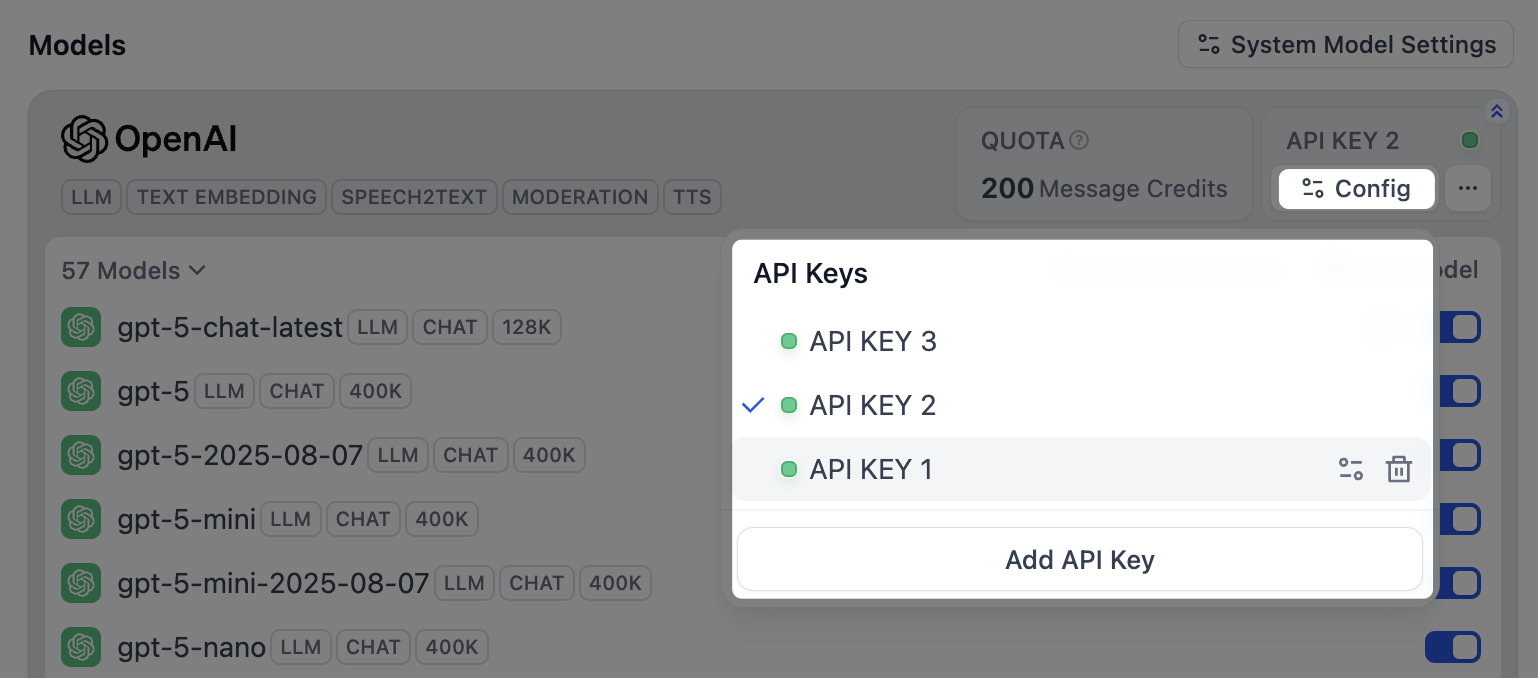Introduction
You can add multiple credentials for a model provider’s predefined and custom models, and easily switch between, delete, or modify these credentials. Here are some scenarios where adding multiple credentials is particularly helpful:- Environment Isolation: Configure separate model credentials for different environments, such as development, testing, and production. For example, use a rate-limited credential in the development environment for debugging, and a paid credential with stable performance and a sufficient quota in the production environment to ensure service quality.
- Cost Optimization: Add and switch between multiple credentials from different accounts or model providers to maximize the use of free or low-cost quotas, thereby reducing application development and operational costs.
- Model Testing: During model fine-tuning or iteration, you may create multiple model versions. By adding credentials for these different versions, you can quickly switch between them to test and evaluate their performance.
Procedure
- Predefined Model
- Custom Model
After installing a model provider and configuring the first credential, click Config in the upper-right corner to perform the following actions:
- Add a new credential
- Select a credential as the default for all predefined models
- Edit a credential
- Delete a credential
If the default credential is deleted, you must manually specify a new one.


